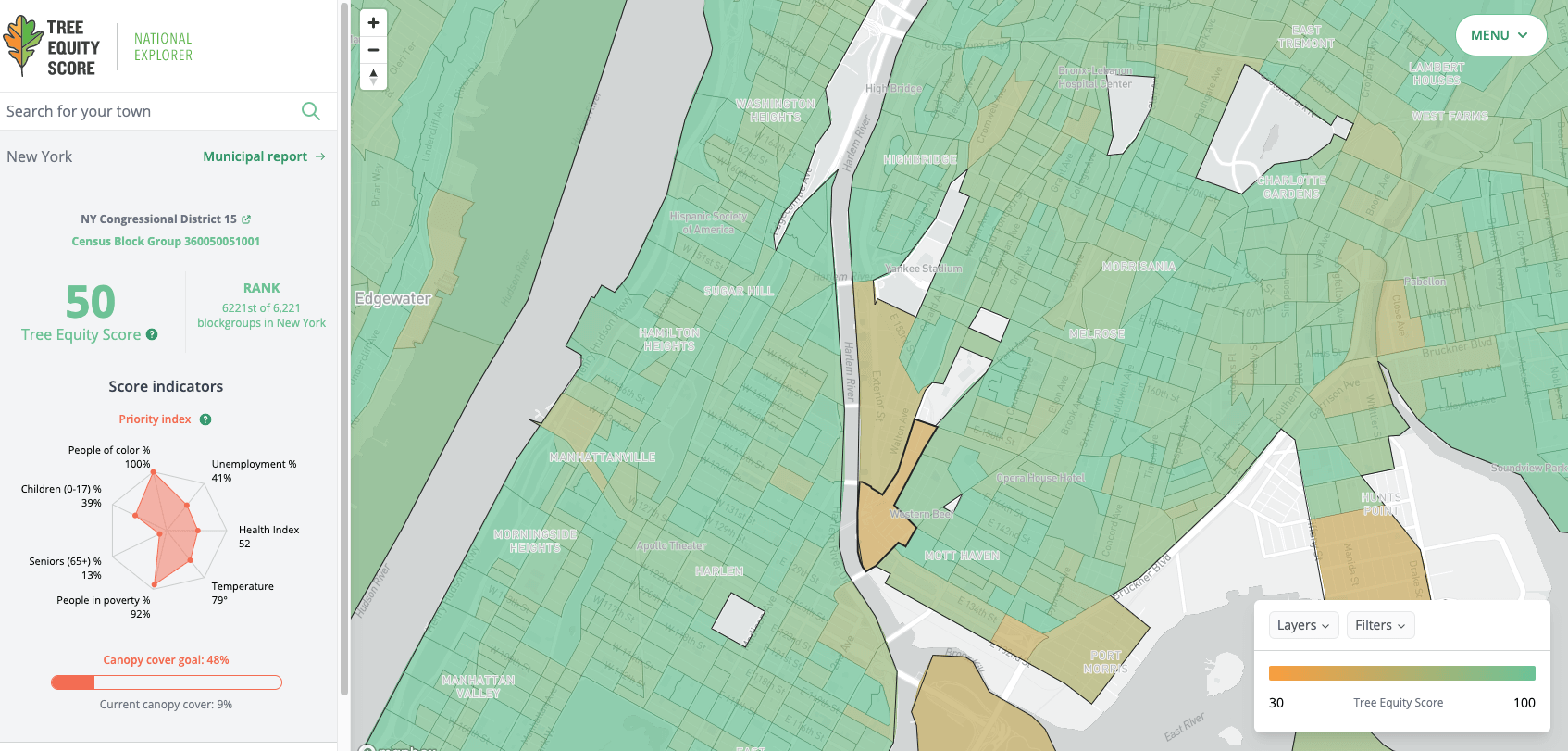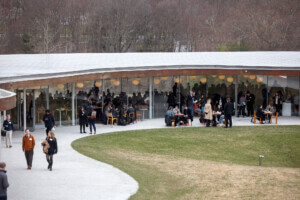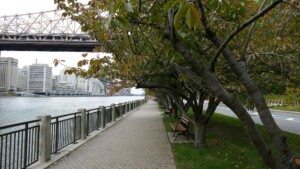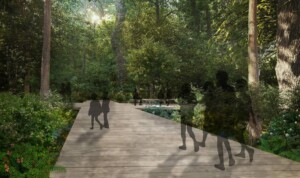The urban renewal era leveled the American landscape, transforming city centers into morasses of treeless highways and interstates built of heat-trapping concrete. The remaining residents of urban cores, who, in many circumstances were and are minorities, are still impacted by the dearth in landscaping that drives vast disparities in summer temperatures. As the New York Times reported, neighborhoods that are predominantly poorer with more residents of color can count on temperatures reaching up to 20 degrees Fahrenheit hotter than wealthier, white quarters of the same city. Now, to counter this characteristic of the American city, the American Forests conservation organization has released their findings on the first-ever nationwide survey of trees which recommends the planting of more than 500 million trees to address shade disparity.
The nationwide evaluation is dubbed the Tree Equity Score, and its metrics are based on existing tree cover and population density across nearly 500 metropolitan areas and 150,000 neighborhoods. The report suggests that the massive planting campaign, at a rate of over 30 million trees a year, could sustain approximately 3.8 million jobs and annually absorb just over 9 million tons of carbon. Of particular importance is the significant reduction in temperature associated with greater tree coverage, and the subsequent decline in heat-related illnesses and death.

“Our Tree Equity Score will help make us all accountable and create action at the local, state, and national levels,” said Jad Daley, president and CEO of American Forests, in announcing the report. “It shows us exactly where the problems exist, where we need to concentrate investment to solve them, and where we need to bring people together—all different types of people and organizations.”
To that end, American Forests has ranked the 20 large-scale cities, defined as those with over 500,000 residents, that have the most to gain from such an initiative, including Chicago, Detroit, New York, and a swath of cities across the Sun Belt. All of the information gathered was compiled and visualized through an interactive map and is viewable at the Census Block Group level.
Although the proposal by American Forests is certainly one of the most ambitious in the country, there are several smaller-scale projects underway that address many of the same problems. Back in March, Boston announced that Stoss Landscape Urbanism and forestry consultants Urban Canopy Works would take the lead on the city’s 20-year urban forest plan to protect and expand tree cover; out West, the city of Los Angeles plans to plant 90,000 trees by the end of 2021 as part of their own Green New Deal Plan.











